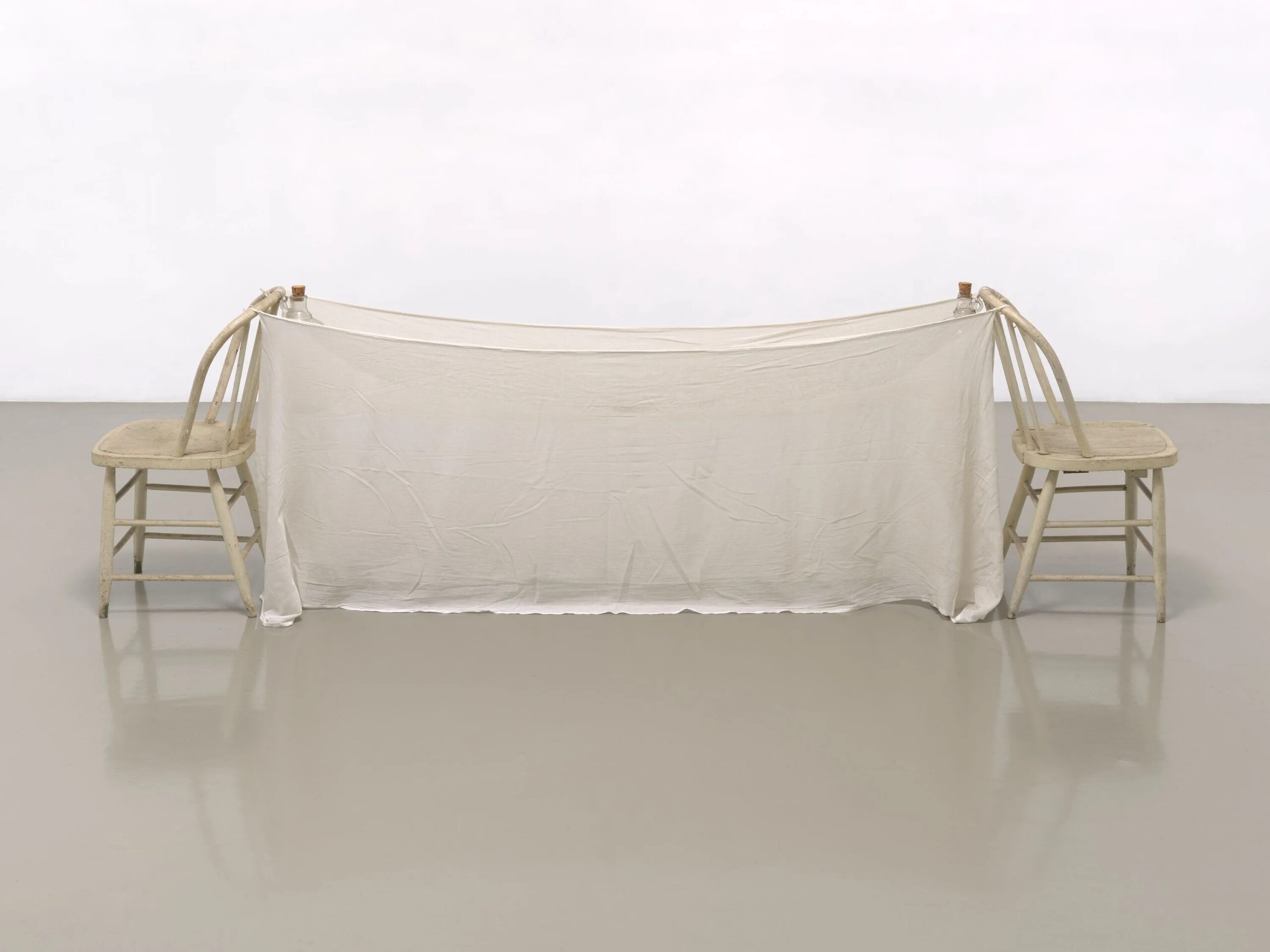

October marked the 100th anniversary of the birth of Robert Rauschenberg, with celebratory exhibitions around the country. The main offerings I’ve had the pleasure of seeing in person have been through Gladstone Gallery, which this spring staged “Sympathy for Abandoned Objects,” a remarkable show of sculptures that felt more Dada than Pop because of the way they let the absurdity of their combined materials speak for themselves. The Proof of Darkness (Kabal American Zephyr) (1981) combined a fire hose with an electric airport runway light that glows haunting blue against a lead plate. Gazing upon it felt like reading Robert Caro while watching Looney Tunes.
More recently, the Menil Collection opened “Robert Rauschenberg: Fabric Works of the 1970s.” In life, Rauschenberg was close with Dominique de Menil, and since the 1980s, the museum has tended to stage one major Rauschenberg exhibition per decade. This latest offering mines an underexplored and experimental aspect of the artist’s practice, one particularly suited for our fashion-oriented times.
Rauschenberg brought a sewing machine to Black Mountain College, and though he is known for his Merce Cunningham costumes, he had a passion for textiles that went beyond his usual respect for the objects he used for his work. In 1970, he moved from New York to Captiva Island, Florida, on the same body of
The Venetians are the ones that have the most in common with the Gladstone sculpture show. Sant’Agnese (Venetian) (1973) sees a mosquito net stretched long between two wood chairs, the whole ensemble embellished with shoelaces. It feels significant that the backs of the chairs each boast a corked glass jug and that they’re turned away from each other at a great distance—not that the cause of this rift will ever be solved. Rauschenberg loved obscurity and red herrings.
The Hoarfrost series really embraces this rebellion against meaning. For them, Rauschenberg ran newspapers and magazines through the lithography press at Gemini G.E.L. in Los Angeles, along with some kind of translucent fabric—often silk, tulle, or gauze. The fabrics were stained with ink, though none of it is meant to be legible. Bucket (Hoarfrost) (1974) features Lucas Cranach The Elder’s The Nymph at the Fountain (c. 1530-1534) alongside a Pierre Cardin dress-shirt ad that reads in part, “His only concession to success is the choice of fabrics that are both distinctif and distingue.” Does this refer to the artist? As he grew more successful with these fabric works, he moved on to the Jammers, which were inspired by his love of windsurfing and use textiles that intrigue—dyed silks and other materials chosen for their ability to flutter. You could pin them down, but you wouldn’t want to. The same can be said of this mysterious and enthralling artist.
“Robert Rauschenberg: Fabric Works of the 1970s” is on view at The Menil Collection through March 1, 2026.
More exhibition reviews





